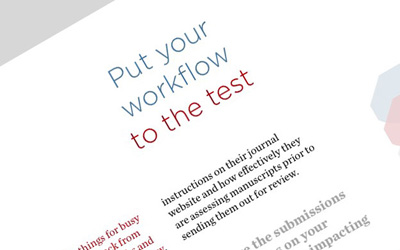
“How can law reviews improve their social media presence” is a question legal academia has been asking for quite a while now. But what does having a social media presence mean for a law review?
Based on what we’ve heard from law review editors we’ve talked to, having a social media presence means that a law review is engaging in some online activity outside of sharing links to the PDFs of print issues on its website. It means leveraging social media to connect with [more] authors and readers.
Whatever it means to you, we know it can feel daunting to kickstart a social media presence — so we did some research. We looked into how some law reviews use social media, and asked how it helps them connect with authors and readers. Below are two interviews with law reviews that have active social media presences, one with the EIC of Charleston Law Review and one with the Symposium Editor of Georgia State University Law Review. We hope these editors’ first hand experiences are helpful as you plan to start or revamp your law review’s social media presence!
Charleston Law Review
Answers provided by David DuTremble, Editor In Chief, Charleston Law Review Vol. 11
How (or why) did your law review became active on Twitter and Facebook?
DDT: The basic social media plan for CLR is pretty simple - focus on emerging areas of the law, keep current with what’s coming out of SCOTUS, and share various posts regarding the writing/editing process. We want to remain visible, grow our network, and ultimately show our commitment to the craft of legal writing in hopes of recruiting potential authors and subscribers. Like any other form of networking, if you don’t put your name out there (akin to ‘face time’, in the real world), no one will be thinking about you. After exams are over and my schedule is a little freer, I may start tying in our Student Works Edition in some of the posts.
Has having a social media presence helped your law review?
DDT: I’m not entirely positive if social media has helped. I wish I had a great story about snagging a new author or something, but it hasn’t happened - yet! Fortunately, though, Facebook has a nice metrics panel for pages that you manage that shows how many people you’ve reached and engaged - in just one week of making one post per day, our page views (and hopefully relevance!) has gone through the roof. Here’s a screenshot of the graph before I took over doing the social networking and then after.
Do you have any advice for a law review that wants to start using social media?
DDT: Keeping current on social media for your journal isn’t really that time consuming. I follow sites like Oyez and SCOTUSBlog on my personal Twitter account, along with Reuters, the Associated Press, Grammarly, Oxford English Dictionaries, etc., because I’m a major nerd and like to be (somewhat) informed. I’ll peruse my feed while I’m eating breakfast, and when I see things that are relevant (and not too political or controversial), I sign into the CLR Twitter and Facebook accounts and post it. It takes me about 15 minutes per day. Just follow some of the things you think would be pertinent to a journal on a personal account and re-post things that seem interesting if you’re crunched for time.
Georgia State University Law Review
Answers provided by Luke Donohue (@lukedonohue), Symposium Editor, GSU Law Review Vol. 32
Can you talk a little bit about how (or why) your law review became active on Twitter?
LD: The current editorial board (2015-2016) made the decision to become active on Twitter as part of our strategic plan to create a more accessible publication. The plan involves increasing our online presence, creating online content, and using social media to interact with authors, readers, and the broader world of academia.
Has having a social media presence helped your law review?
LD: This year, our law review symposium centered on transparency in the Supreme Court. The conversations focused on issues like cameras, recusal, and the Justices’ Papers, but there was also discussion of the role of social media. Throughout the day, we used #GSULawSymposium to interact with people nationally. Lawyers from across the country were able to tune in. It allowed our symposium to have an impact beyond the four walls of the school. We posed questions from twitter users to our panelists; we tweeted pictures throughout the event; and we even captured a moment of Judge Posner on live-feed taking a picture of us.
"Tweetception" with Judge Posner, discussing live-tweeting in the courtroom. #GSULawSymposium pic.twitter.com/En9L8fDNLq
— GSU Law Review (@GSULawReview) February 11, 2016
Because of social media, we were able to further the discussion and debates on the proper role of judges on Twitter and other social media sites. Georgia Court of Appeals Judge Dillard (@JudgeDillard) spoke to the panelists the night before at a dinner about his views on social media. On one of our panels, Justice Willett (@JusticeWillett) of the Texas Supreme Court explained how valuable social media is to him as a judge and an elected official. These judges are some of the most prevalent legal personalities on social media and it was a great experience to hear them speak about the value of that vehicle.
By the end of the day, our hashtag was trending on twitter. We were able to bring attention to our transparency in the Supreme Court and increase the visibility of the Georgia State Law Review, which in the future may help us solicit articles or attract professors who otherwise may not have us on their radar.
Do you have any advice for a law review that wants to start using social media?
LD: I think my advice would be different based on what a particular law review intended to get out of its social media experience. My main advice would be to know your audience. We try to tweet out when new issues are available for download and to tag any of our published authors who use Twitter as well. This allows them another venue through which to bring attention to their work. Of course, we are also a student organization. So we like to tweet pictures of events, editorial board meetings, and highlight member accomplishments. Social media is ultimately a great tool for engaging authors, readers, students, and others and increasing the visibility of your organization.
Does your law review have a new or growing social media presence? How do you hope to make social media a part of your editorial strategy? Let us know on Twitter at @scholasticaLR!

